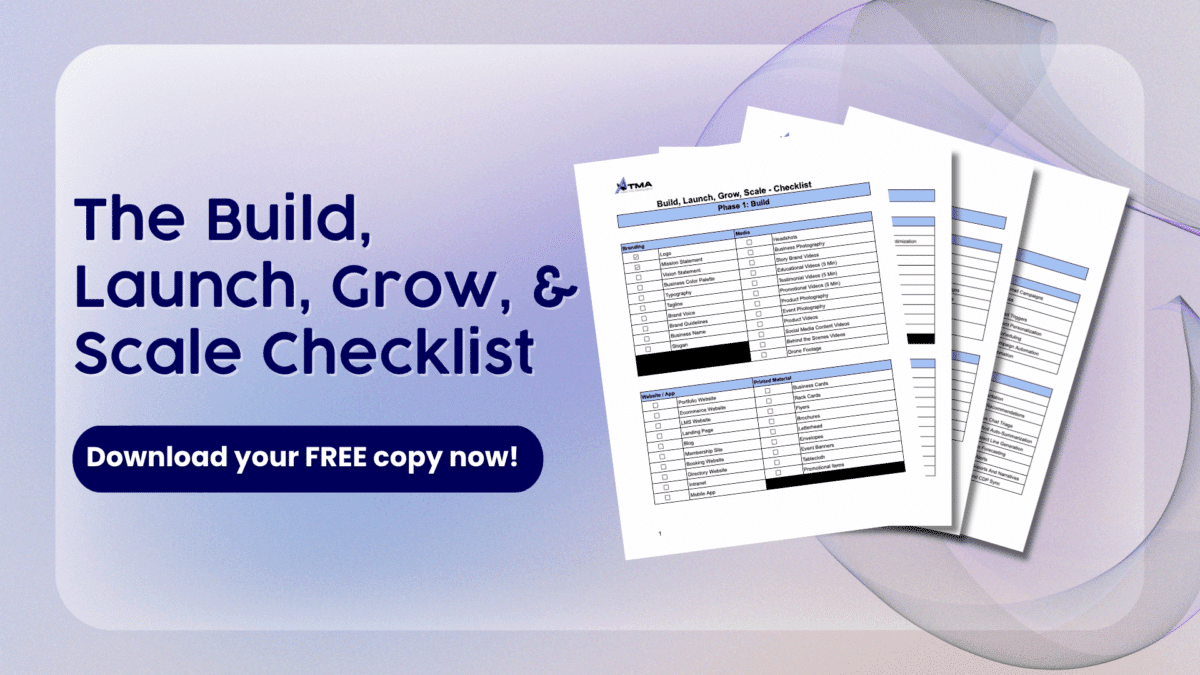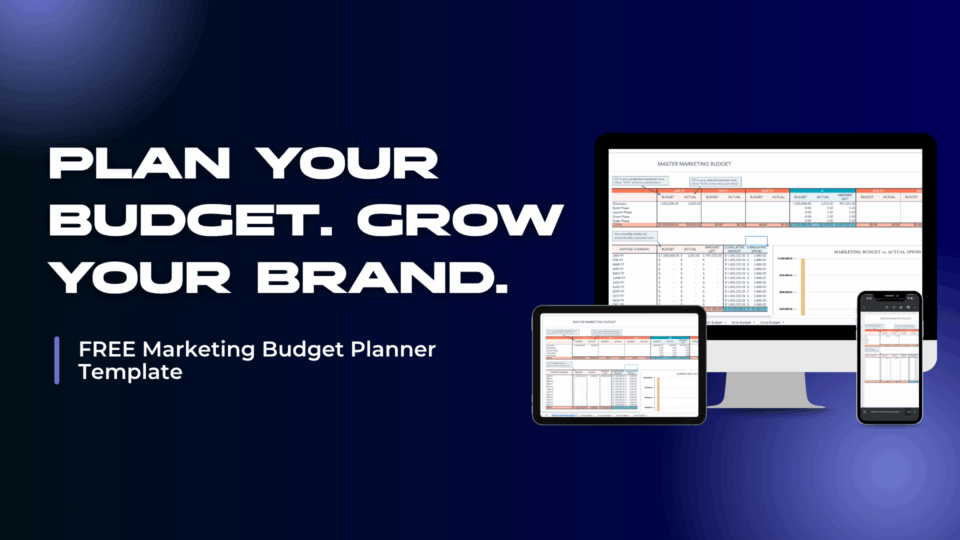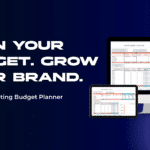
Free Marketing Budget Strategy to Grow Your Business
October 16, 2025By Bryan Acosta
Our vision is to change the world through innovation and inspire businesses to grow.
“Business success isn’t about doing everything. It’s about doing the right things in the right order.”
Whether you’re a startup founder or scaling a multi-location brand, the Build, Launch, Grow, and Scale (BLGS) Checklist is your marketing roadmap to mastering the marketing process from foundation to automation.
This free checklist helps you identify what’s complete, what’s missing, and what to focus on next — giving you clarity, direction, and measurable momentum. It serves as a vital marketing audit tool.
Download the Free Build, Launch, Grow, and Scale Checklist.
Take 60 seconds to grab your copy and start mapping out where your marketing strategy really stands. Use it to track progress, uncover blind spots, and prioritize actions that move your business forward more quickly.
Table of Contents
- What is the Build, Launch, Grow, Scale Checklist?
- How to Use the Checklist
- Building Your Assets in Marketing
- Launching Your Business into the Market
- Growing Your Database and Nurturing Relationships
- Setting Up Automation
- Creating the Right Strategy for Your Industry
What is the Build, Launch, Grow, Scale Checklist?
The Build, Launch, Grow, and Scale (BLGS) Checklist is more than just a list — it’s a marketing roadmap to marketing clarity.
It breaks down your entire marketing ecosystem into four progressive phases that every successful business must go through, regardless of its size, industry, or experience level.
Think of it as your marketing GPS: it tells you exactly where you are, what’s missing, and what to prioritize next to keep your business moving forward.
Here’s how it works:

Build: The Foundation Phase
This is where every great brand begins. In the Build phase, you establish your visual identity, messaging, and core digital assets — the tools that make you credible and recognizable.
You’ll focus on:
- Crafting your brand story through mission, vision, and tagline.
- Developing your logo, color palette, and brand voice to ensure consistency across every platform.
- Creating professional photography and video assets that bring your brand to life.
- Building your website or app — the digital home where all your traffic converts.
You can’t scale what you haven’t built. The stronger your foundation, the faster your growth. Investing here is cost effective in the long run.
Launch: The Visibility Phase
Once your foundation is in place, it’s time to get noticed. The Launch phase is where you introduce your brand to the market — strategically, not randomly — attracting your target market and target customers.
This includes:
- Running Google Ads, Facebook Ads, Instagram Ads, and LinkedIn Ads campaigns to generate leads.
- Leveraging organic content across Facebook, Instagram, LinkedIn, TikTok Ads, and YouTube Ads.
- Expanding into traditional media like radio, billboards, and local sponsorships.
- Aligning every campaign with your customer journey — awareness, consideration, and conversion.
Launching isn’t about spending money — it’s about spending with intention on the right marketing activities.
Grow: The Relationship Phase
Now that you’re visible, it’s time to build trust and loyalty. The Grow phase is about turning attention into long-term customer relationships.
Here, your focus shifts to:
- Building email marketing and SMS marketing systems to stay connected with your audience.
- Creating blog posts, podcasts, webinars, and videos that educate and position your brand as an authority (content marketing).
- Launching influencer marketing and affiliate marketing partnerships that expand your reach and credibility.
- Nurturing your existing clients into repeat customers and brand advocates.
Growth isn’t just about getting more customers — it’s about deepening the customer relationships you already have.
Scale: The Automation Phase
This is where business gets exciting. In the Scale phase, you automate and optimize your marketing so it works for you 24/7. This helps the bottom line.
You’ll focus on:
- Implementing CRM automation and marketing automation systems that capture, score, and segment leads automatically.
- Using AI-driven data tools for smarter targeting, predictive insights, and personalized content.
- Setting up sales automation workflows for quotes, follow-ups, and reporting.
- Creating A/B testing and retargeting campaigns that constantly refine performance.
Scaling isn’t about doing more work — it’s about making your systems do the work for you.
Each section of the BLGS Checklist provides a clear view of your marketing’s current status and identifies areas that require attention next. From logos and videos to CRM automations and AI analytics — every piece connects to the larger picture: a marketing ecosystem that actually drives growth.
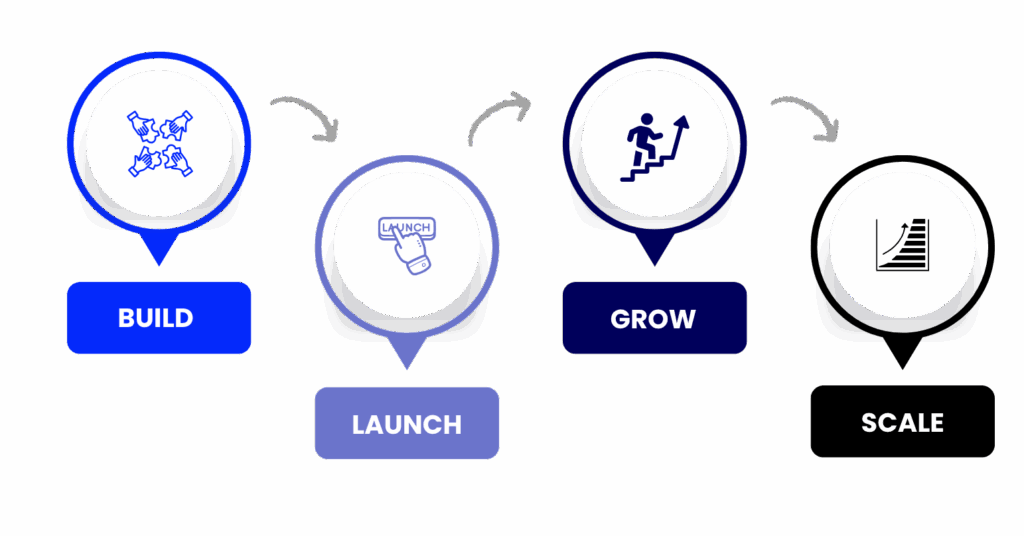
How to Use the Checklist
The Build, Launch, Grow, and Scale Checklist isn’t just a document — it’s a living marketing roadmap for your business.
You can print it, hang it in your office, or keep the digital version open as a project tracker. The goal is simple: make your marketing process visible, measurable, and manageable.
Here’s how to get the most out of it:
Step 1: Check Off What You’ve Already Completed
Start by auditing where your business stands today. Go through each section — Build, Launch, Grow, Scale — and mark the assets, campaigns, or systems you’ve already created.
This gives you an instant sense of your marketing maturity and establishes your marketing baseline. You might realize you’re strong in branding but light on automation. Or that you’ve launched ads but never optimized your funnel.
Think of this as your “marketing baseline.” You can’t improve what you haven’t measured.
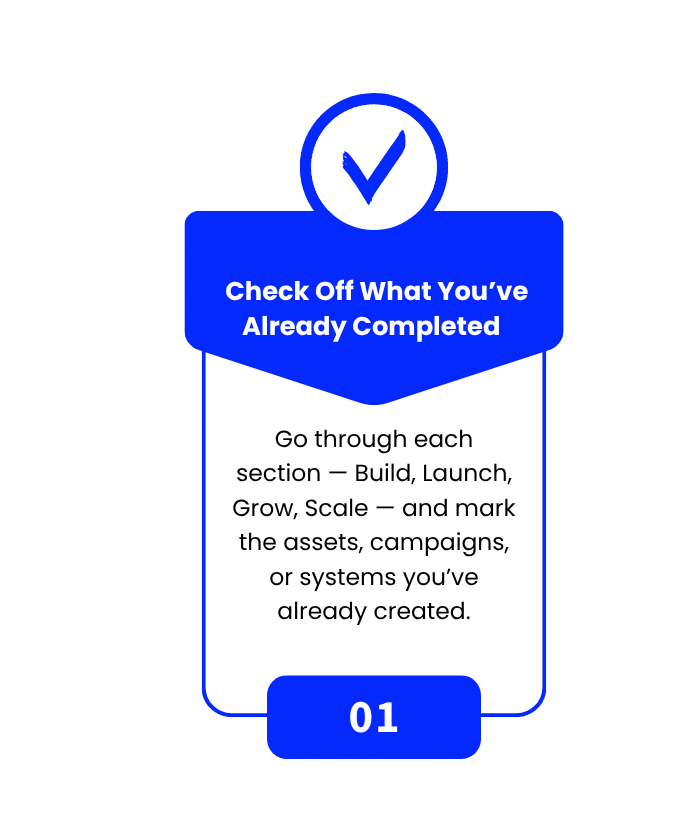
Step 2: Highlight What You Need to Work On Next
Now that you see what’s done, highlight the gaps. These are your next growth opportunities — the areas where focused effort can deliver the biggest ROI.
If your website is live but you’ve never done SEO, that’s your next move. If you’ve got leads but no nurture campaigns, it’s time to focus on email marketing.
The beauty of this checklist is that it makes your priorities crystal clear — so you stop guessing and start growing with direction on your marketing journey.
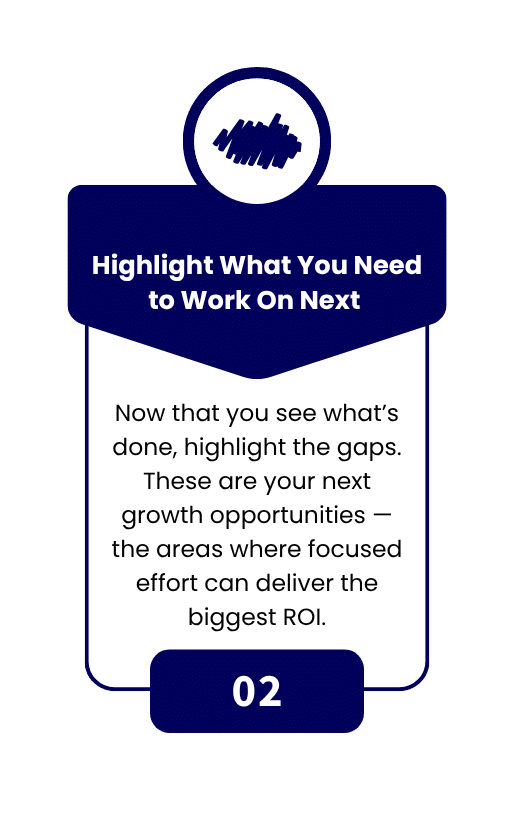
Step 3: Assign Deadlines and Accountability
Execution is everything. Assign each unchecked item to a specific team member, partner, or deadline. Don’t try to tackle it all at once — pick one or two items per phase to focus on each month or quarter.
Consistency beats intensity. A steady pace toward completion builds momentum and long-term results.
The goal isn’t to finish everything overnight — it’s to create a progress map for your marketing journey. Each checkmark represents progress toward predictable, scalable growth.

Building Your Assets in Marketing
Before you can launch, you must build your brand infrastructure. This is where your business identity takes shape — the visual, verbal, and digital assets that tell the world who you are and why you matter.
Think of this phase as pouring the concrete for your marketing foundation. Everything that comes after — advertising, automation, even scaling — depends on how strong your foundation is.
In this phase, focus on four key areas:
Branding: The Identity of Your Business
Your brand is more than a logo — it’s the emotional connection people have with your business. Here’s what to establish first:
- Logo & Color Palette: These create instant recognition and consistency.
- Typography & Visual System: Defines your aesthetic tone.
- Brand Voice & Messaging: The language, tone, and story that connect emotionally with your audience.
- Brand Guidelines: Your visual rulebook to ensure consistency across all platforms.
The goal of branding isn’t just to look professional — it’s to be memorable and authentic, helping to increase brand awareness.

Media: The Face of Your Brand
Once your brand identity is locked in, bring it to life with visual storytelling. Invest in:
- Professional Headshots that builds trust and credibility.
- Photography of your team, products, and clients that humanizes your brand.
- Videos — from short testimonials to story-driven explainers — that show your impact, not just your services.
In today’s digital landscape, visuals aren’t optional — they’re how your audience connects, feels, and remembers you.
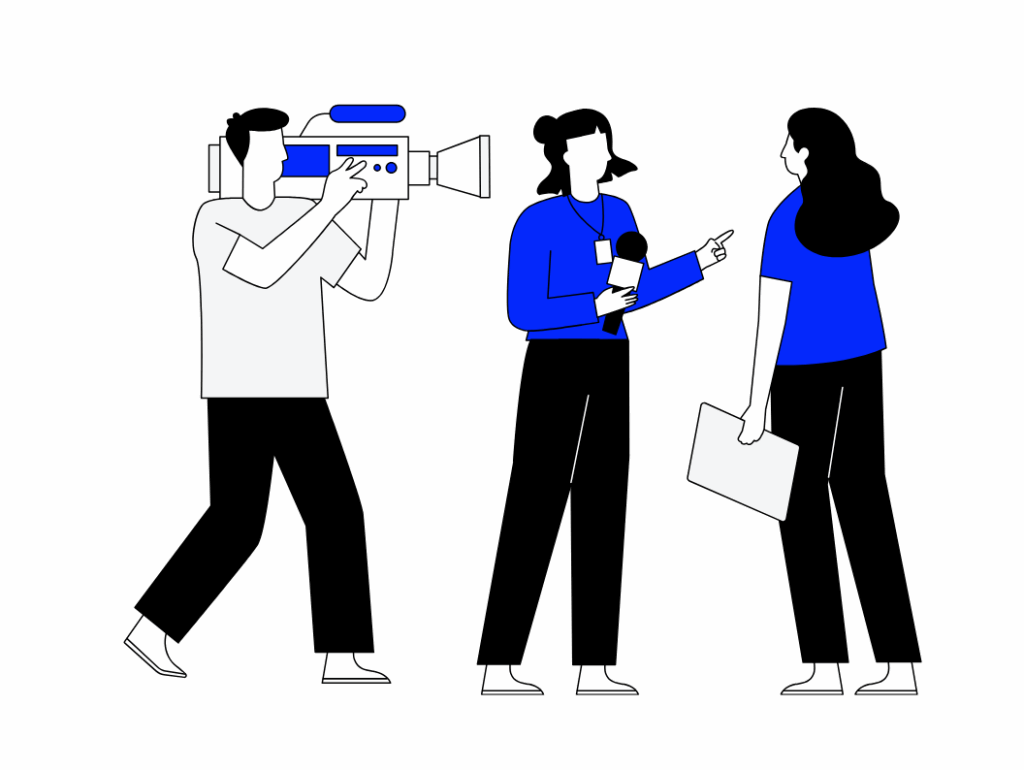
Website / App: The Digital Home of Your Brand
Your website isn’t just a brochure — it’s your digital sales engine. Make sure it’s:
- High-performing (fast, mobile-optimized, and conversion-focused).
- Designed to guide visitors through a journey — from awareness to action.
- Built with SEO and user experience (UX) in mind to attract and retain driving traffic.
- Integrated with tools like CRMs, booking systems, or eCommerce to convert visitors into leads and customers.
Whether you’re building an eCommerce store, LMS platform, or portfolio site, your website is where curiosity becomes commitment.
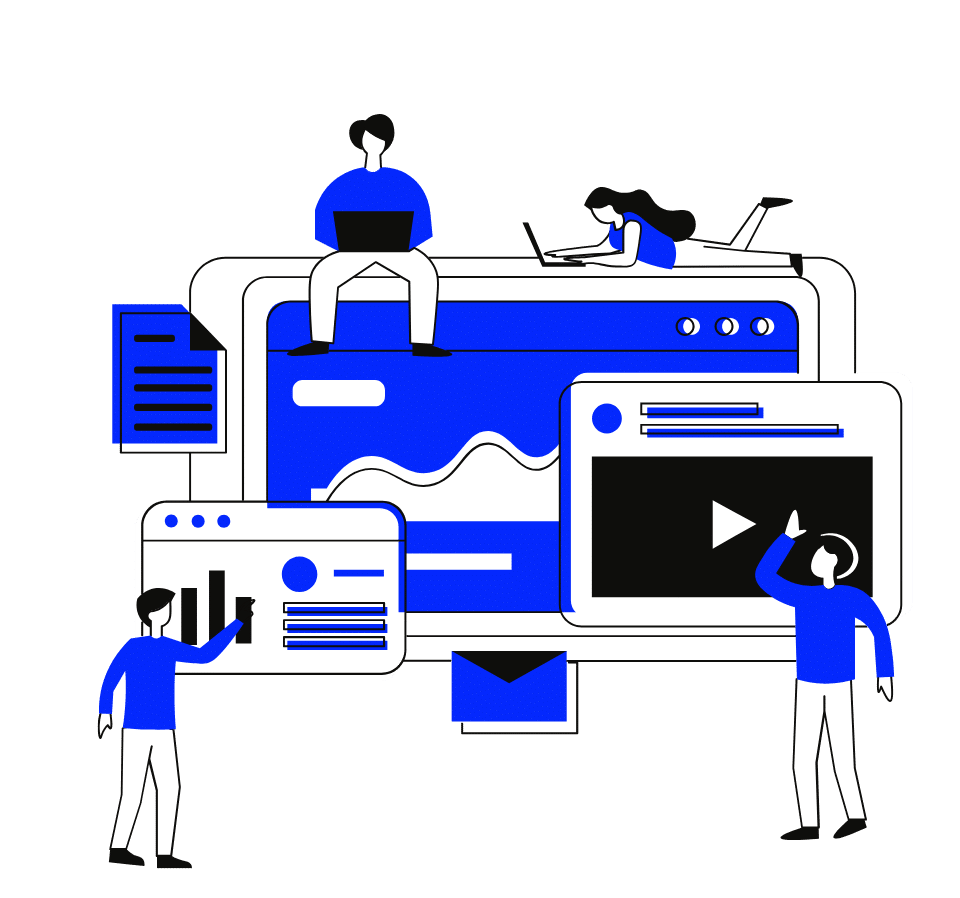
Printed Material: Tangible Brand Presence
Even in a digital world, print still leaves a lasting impression. Create materials that match your brand identity and deliver value in person:
- Business Cards & Brochures for networking and events.
- Rack Cards, Flyers, and Event Banners for trade shows and community engagement.
- Promotional Items (pens, shirts, mugs, etc.) that keep your brand in sight — and in mind.
Printed materials extend your online presence into the real world — builds trust through touch.

Building right means building once. When you invest in professional branding, high-quality media, and a well-structured website, you create assets that last — and scale with your business. This phase isn’t about perfection; it’s about precision. Do it right the first time, and every future dollar in your marketing budget will work harder for you.
Launching Your Business into the Market
Once your foundation is solid, it’s time to get visible — because a great brand that no one sees is still invisible.
The Launch phase of the BLGS Checklist is where marketing strategy meets exposure. This is where you introduce your business to the world and start generating measurable momentum. The goal here isn’t just activity — it’s visibility with purpose for a specific audience.
You’re no longer building behind the scenes — you’re putting your brand in front of the right people, in the right places, at the right time.
Digital Advertising: Pay to Play, Strategically
Digital ads are your fast track to visibility and driving traffic. Done right, they give you control over who sees your message, when they see it, and how often.
Channels to prioritize:
- Google Ads & Bing Ads: Capture high-intent leads searching for your exact solution.
- Facebook Ads & Instagram Ads: Build increase brand awareness and retarget interested visitors.
- LinkedIn Ads: Perfect for B2B lead generation and professional audiences.
- YouTube Ads: Showcase your story visually and emotionally.
Don’t advertise everywhere — advertise where your audience actually lives online, keeping a tight control on your marketing budget.
Search Engine Optimization (SEO): Own the Long Game
While paid ads bring quick wins, SEO builds long-term authority within search engines. It’s about being found organically when your audience searches for what you offer.
Key focus areas include:
- Local SEO: Get visible in your city or service area through Google Business Profile optimization.
- On-Page SEO: Optimize your site’s content, keywords, and structure.
- Technical SEO: Improve speed, mobile usability, and indexing performance.
- Voice & AI Search Optimization: Prepare for answer engines like ChatGPT, Perplexity, and Siri — the next evolution of search.
SEO isn’t just about ranking high. It’s about owning the conversation around your brand.
Social Media: Build Trust Through Connection
Your social media platforms are where your audience goes to feel your brand, not just see it. Consistency is key here — not just in posting frequency, but in personality and value.
Create and share:
- Educational content that solves problems.
- Behind-the-scenes stories that humanize your brand.
- Short-form videos that showcase your energy and authenticity.
- Interactive social media posts that invite engagement and conversation.
Platforms to consider: Facebook, Instagram, LinkedIn, TikTok (utilizing TikTok Ads strategies), YouTube Ads (leveraging video), and X (Twitter). People don’t follow logos — they follow stories. Use social media to make your audience part of yours.
Traditional Advertising: Stay Seen in the Real World
Digital may dominate, but traditional media still has power — especially when used in combination with your online campaigns.
Tactics to include:
- Radio & Television Ads: Great for increasing brand awareness and local reach.
- Billboards: Perfect for awareness campaigns and event promotions.
- Trade Shows & Sponsorships: Connect with your community face-to-face.
- Direct Mail & Print: A tangible reminder of your brand in a digital world.
A multi-channel launch creates familiarity. Familiarity builds trust — and trust drives conversions.
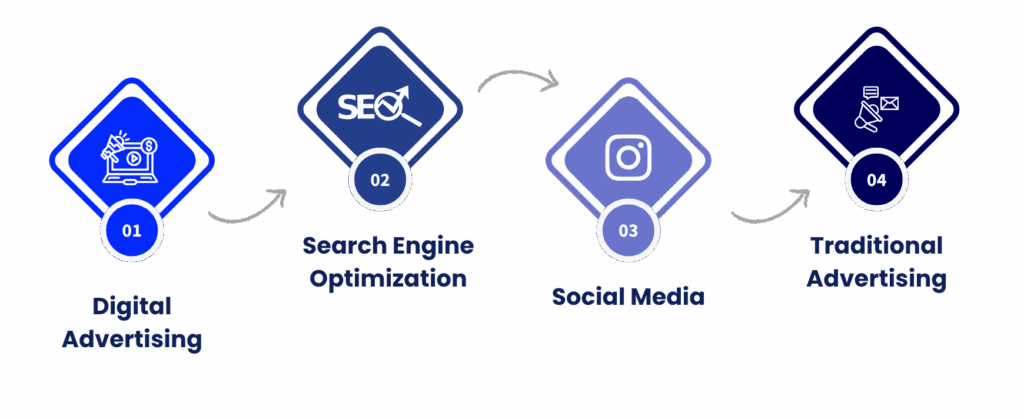
Growing Your Database and Nurturing Relationships
Growth doesn’t just come from reaching more people — it comes from deepening relationships with the ones you already have.
When businesses stop obsessing over new leads and start nurturing existing ones, everything changes. Conversion rates rise, referrals increase, and customers start selling for you.
That’s what Phase 3: Grow is all about — turning attention into loyalty, and loyalty into advocacy.
This phase focuses on relationship-building systems that strengthen your connection with your audience and turn one-time buyers into lifelong fans.
Email Marketing: Building a Direct Line of Trust
Email marketing is still the most profitable marketing channel — and the most personal. Use it to educate, inspire, and build value long before you sell.
Your checklist includes:
- Welcome Sequences: Introduce new subscribers to your brand story and services.
- Newsletters: Keep your audience informed about new content, offers, and wins.
- Promotional email campaigns: Announce product launches or limited-time deals.
- Re-engagement Sequences: Bring inactive leads back into the conversation.

Email isn’t about sending messages. It’s about building customer relationships — one click at a time. Pro Tip: Segment your email list based on customer behavior and interests. Personalized emails convert up to six times higher than generic ones. Collect and respect the email address of every lead.
SMS Marketing: Connection at Lightning Speed
SMS marketing messages have a 98% open rate — and they reach your audience instantly.
Use SMS marketing for:
- Reminders: Appointments, webinars, and event confirmations.
- Flash Sales & Loyalty Updates: Reward engagement and encourage repeat business.
- Personalized Offers: Quick, valuable incentives that drive immediate action.
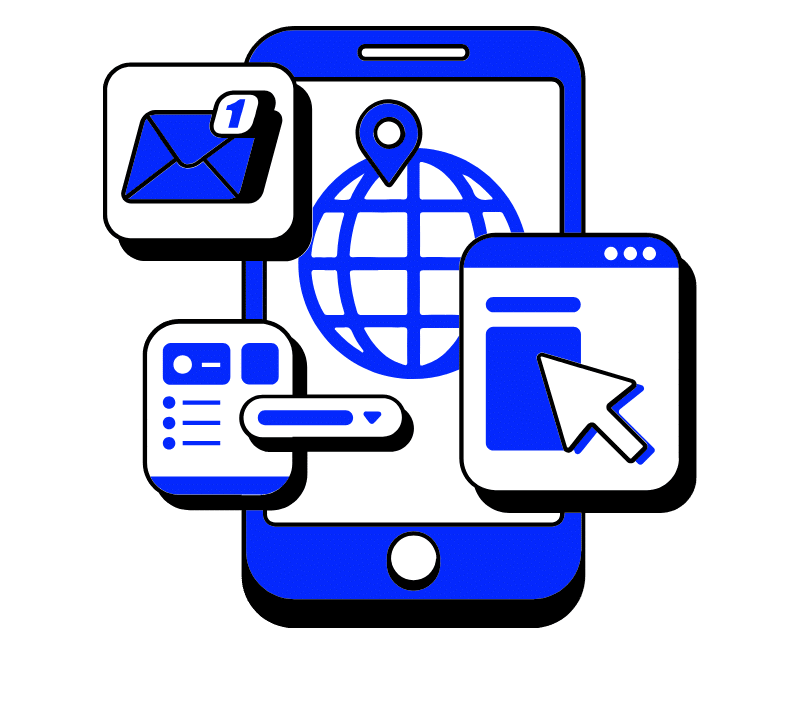
SMS is about timing — the right message, to the right person, at the right moment. Combine SMS with email automation for a one-two punch that keeps your brand top of mind without being intrusive.
Content Marketing: Educate, Engage, and Empower
Content marketing is where your brand earns authority. Through blog posts, podcasts, webinars, videos, eBooks, and infographics, you’re not just marketing — you’re teaching. You’re positioning your brand as the expert that solves real problems.
Use your content to:
- Answer the questions your audience is already searching for.
- Share your process and expertise to build credibility.
- Tell stories that inspire action and connection.

Consistent, valuable content turns curiosity into confidence — and confidence into conversions.
Influencer and Affiliate Marketing: Leverage Trust Through Others
People trust people. That’s why influencer marketing and affiliate marketing are modern credibility builders.
Your checklist covers:
- Sponsored Posts & Product Reviews: Leverage other voices to amplify yours.
- Affiliate Partnerships: Reward others for promoting your products or services.
- Collaborative Campaigns: Cross-promotions that expand reach and attract new audiences.
Borrowing trust is the fastest way to build trust. When others advocate for your brand, your authority skyrockets.
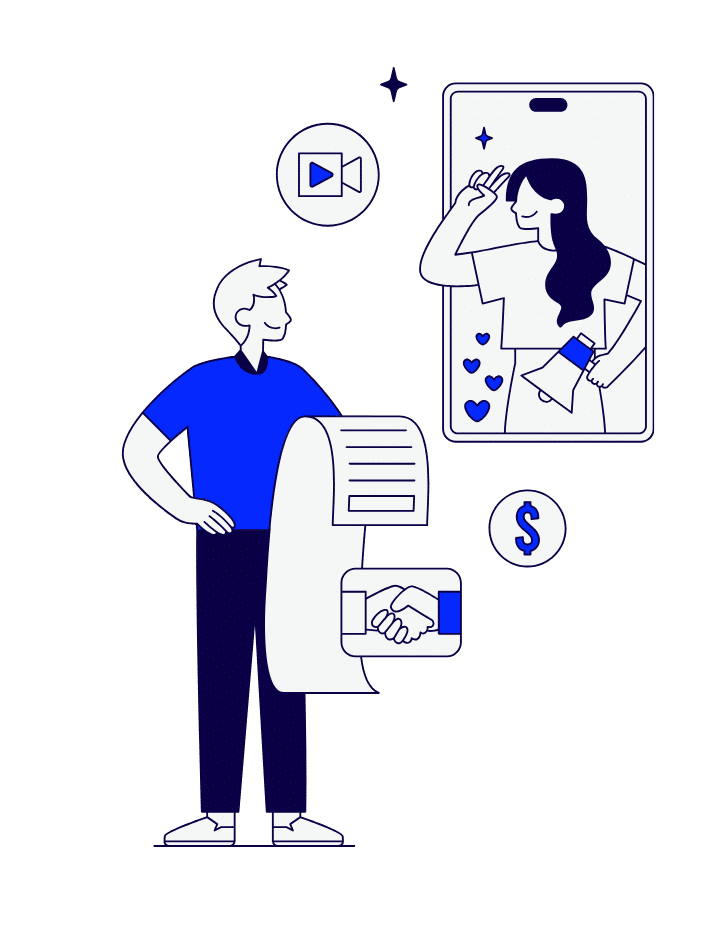
The Goal: Connection That Compounds. This phase is where your voice becomes authority and your brand becomes trusted. The more value you give, the more loyalty you earn — and that loyalty compounds into long-term, sustainable growth that hits your bottom line. The businesses that win aren’t the loudest — they’re the ones that care the most and communicate it clearly.
Setting Up Automation
Phase 4 is where your marketing transforms from manual effort into a scalable machine. Automation doesn’t just save time — it builds consistency, removes human error, and gives you the customer data you need to make smarter, faster decisions.
This is where technology becomes your best team member — running email campaigns, qualifying leads, following up, and personalizing experiences while you focus on what matters most: marketing strategy and growth.
CRM Automation: The Heartbeat of Your Customer Data
A solid Customer Relationship Management (CRM) system keeps all your contacts, leads, and clients organized and engaged.
With CRM automation, you can:
- Capture leads automatically from forms, ads, or landing pages.
- Score leads based on behavior (like email opens, clicks, or site visits).
- Segment contacts into groups for personalized follow-up.
- Trigger tasks or reminders for your sales team and service teams.
Think of your CRM as the nerve center of your business — tracking every interaction and surfacing opportunities you might otherwise miss.
Marketing Automation: Your 24/7 Growth Engine
Marketing automation allows you to run complex marketing activities with minimal effort.
This includes:
- Drip Campaigns: Deliver nurturing emails over time to move leads through your funnel.
- Retargeting Campaigns: Reconnect with people who visited your website but didn’t convert.
- A/B Testing: Continuously test what messages, visuals, or offers perform best.
- Social Scheduling: Plan and post consistent content across all platforms automatically.
Marketing automation turns strategy into action — ensuring your message keeps moving even when you’re not.
Sales Automation: From Lead to Closed Deal
When marketing and sales work together through automation, you eliminate friction and speed up revenue.
Use automation to:
- Generate and send proposals and quotes instantly.
- Follow up automatically after inquiries, demos, or meetings.
- Track your pipeline and generate real-time reports on deal progress.
- Automatically assign leads to the right sales team member or department.
Sales automation doesn’t replace human connection — it gives your team more time to build trust with the client.
AI & Data Automation: The Future of Smart Marketing
Artificial Intelligence takes your automation to the next level. Leverage AI tools to:
- Perform predictive segmentation — knowing who’s most likely to buy or churn.
- Use chatbots for 24/7 lead capture and instant support.
- Automate personalized content and subject lines to boost engagement.
- Analyze campaign performance with AI-driven insights and forecasting.
AI doesn’t replace creativity — it enhances it by freeing your time and revealing patterns you can’t see manually.
The Goal: Smarter Systems, More Freedom Automation doesn’t replace the human touch — it amplifies it. The smarter your systems, the more time you have to focus on creativity, innovation, and connection. You move from reacting to predicting — from guessing to scaling with clarity. Automation is the bridge between chaos and consistency — and it’s how great businesses stay ahead without burning out.
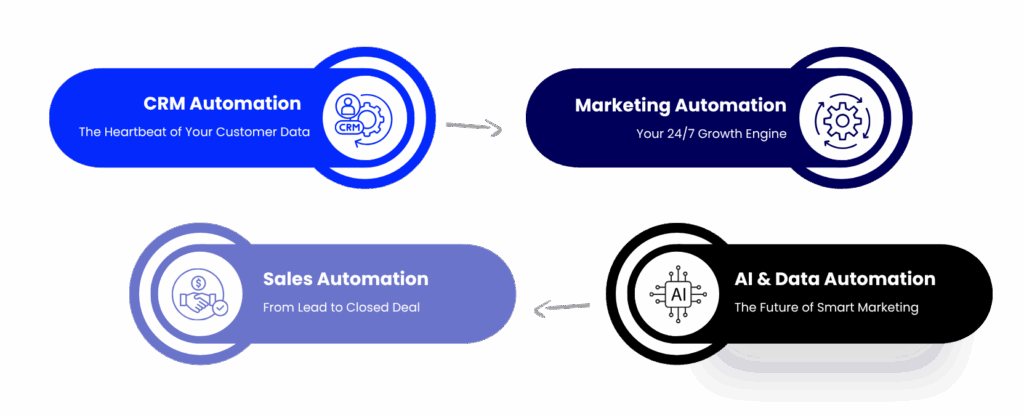
Creating the Right Strategy for Your Industry
Every industry has its own rhythm — its own buyer behavior, decision timeline, and emotional triggers. That’s why there’s no such thing as a one-size-fits-all marketing strategy.
Your completed Build, Launch, Grow, and Scale (BLGS) Checklist helps you tailor your marketing strategy to fit the unique needs of your business and your audience. This ensures your marketing budget is maximized toward your target market.
Think of it as your industry playbook — a guide that aligns your efforts with where your customers actually are, and how they make decisions.
Here’s how to apply it strategically:
Real Estate: Market Visibility Meets Local Authority
In real estate, trust and location are everything. Your audience isn’t just buying a property — they’re buying confidence in you. Focus on:
- Local SEO and Google Business Optimization to dominate local search engines.
- Video Tours and Drone Footage to bring listings to life.
- Targeted Facebook Ads and YouTube Ads for precise geographic reach to your target customers.

Real estate success is about being seen first and trusted most.
Healthcare: Build Trust Before the First Appointment
Healthcare decisions are emotional and deeply personal. Your marketing should feel human, not transactional. Focus on:
- Patient Reviews and Testimonials to establish credibility.
- Content Marketing: Share educational blog posts, videos, and FAQs that empower your patients.
- Community Involvement: Attend local health fairs, sponsor events, and create wellness resources.
In healthcare, authority comes from empathy — educate first, sell second.
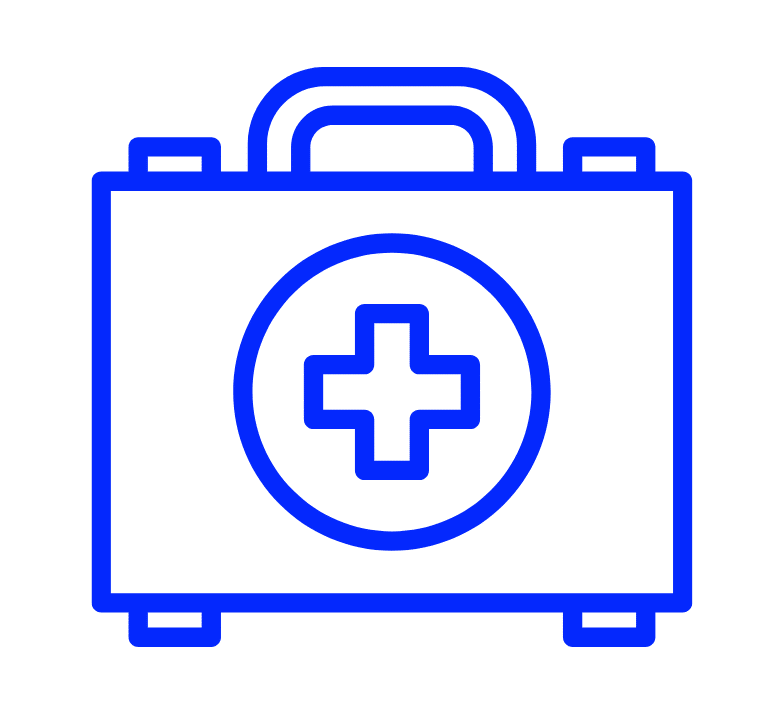
E-Commerce: Turn Clicks into Customers
Online shoppers crave convenience and confidence. Your job is to make their decision effortless. Focus on:
- Retargeting Campaigns: Bring back cart abandoners with irresistible offers.
- Influencer Partnerships: Use authentic voices to builds trust and social proof.
- Email & SMS Automation: Nurture post-purchase loyalty with personalized follow-ups and exclusive offers.
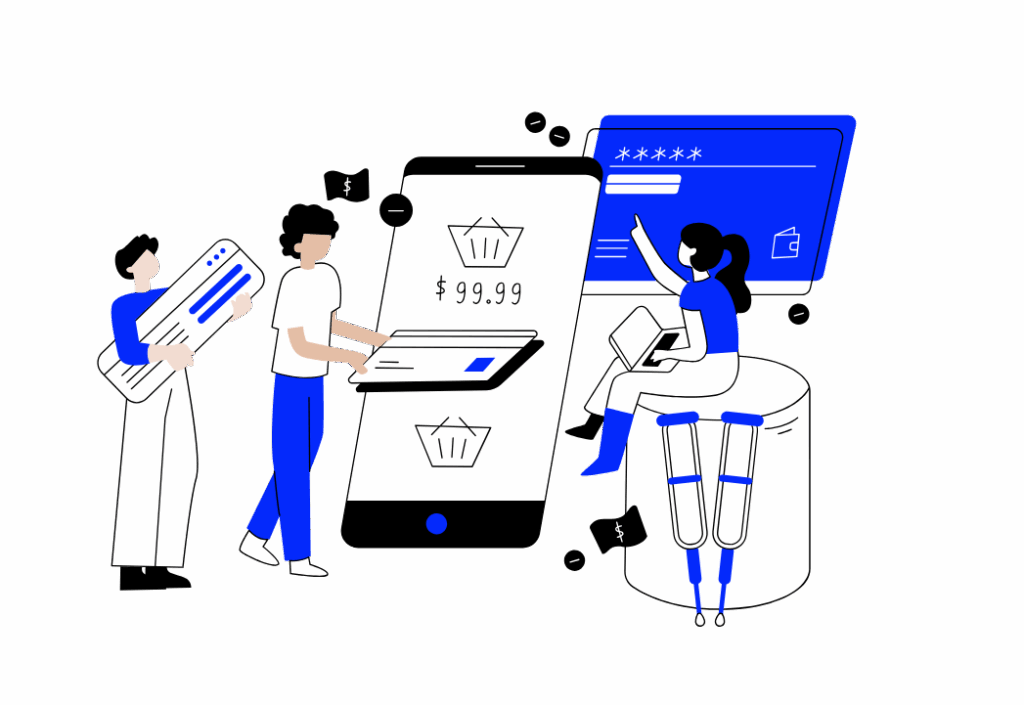
The best e-commerce brands don’t just sell products — they create experiences that customers want to return to, all while driving traffic.
B2B Services: Authority is Your Greatest Currency
In the B2B space, buying cycles are longer, and decisions are data-driven. Your marketing strategy should educate, build credibility, and stay top-of-mind through consistent thought leadership for your specific audience. Focus on:
- LinkedIn Marketing: Publish insights, case studies, and connect with decision-makers.
- Webinars and Workshops: Offer value first, and let your expertise do the selling.
- Content Series: Use long-form blogs, whitepapers, and success stories to showcase ROI.
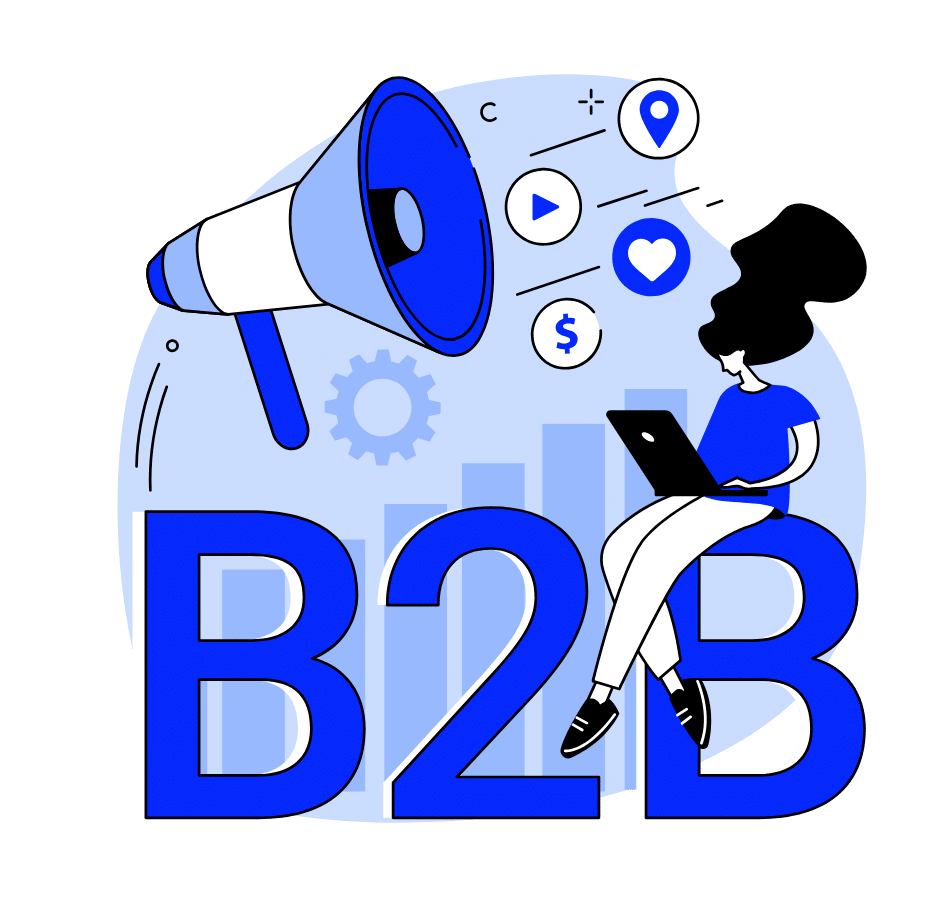
In B2B, your marketing isn’t about shouting louder — it’s about proving you’re the smartest voice in the room to the sales team.
The Goal: Strategy with Structure. No matter your industry, your marketing strategy should never feel random. Strategy without structure is chaos. The BLGS Checklist gives you both clarity on what to do and when to do it. When you follow the framework, you’re not just executing tactics — you’re building a growth system tailored to how your market actually moves. This enables you to make informed decisions that drive the bottom line.
Ready to Audit Your Marketing Like a Pro?
Download the Free Build, Launch, Grow, and Scale Checklist and discover precisely what’s missing in your marketing — so you can focus on what moves the needle. This is the same system we use at Advent Trinity Marketing Agency to help businesses create momentum, consistency, and measurable growth.
Final Thought: Don’t just do more marketing activities. Do more innovative marketing processes — one phase at a time.

